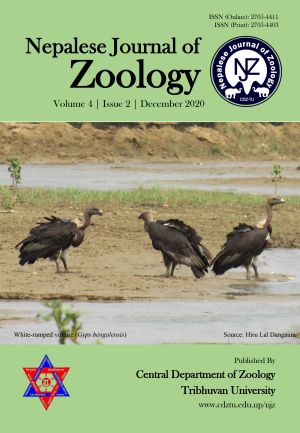Spatial analysis of water stress and application of water poverty index in the Mahakali River Basin, Sudurpaschim Province, Nepal
DOI:
https://doi.org/10.3126/njz.v4i2.33887Keywords:
Mahakali River Basin, Resource availability, Resource utilization, Water poverty index, Water resourcesAbstract
Water Poverty Index (WPI) is an effective tool to assess water stress by linking physical approximations of water availability with socioeconomic drivers of poverty at household and community levels. It also helps in determining the priority needs for interventions and makes the better use of water resources without compromising the environmental integrity at the policy level. This study presents a comparative analysis of WPI to assess the water stress in two local units i.e., Mahakali Municipality-4 (Upstream) and Bhimdatt Municipality-13 (Downstream) of the Darchula and Kanchanpur districts, respectively along the Mahakali River Basin (MRB), Sudurpaschim Province, Nepal. Five components, i.e., resource availability, use of resources, capacity to utilize water sources, accessibility to water sources, and environment were applied to appraisal the water poverty. Under these components, 28 indicators were selected to visualize the water poverty condition. The information for acquiring these indicators was collected by making the field visit, semi-structured questionnaire survey, and secondary information from relevant sources. The results showed that the downstream segment has a higher WPI value (65.43) in comparison to the upstream segment (52.60) of the MRB, indicating relatively water-advantaged and stressed situations in down- and up-streams, respectively. Interestingly, despite having higher resource availability, the upstream region exhibited more stressed situations reflecting spatial heterogeneity in terms of capacity, environmental conditions, and infrastructure development to use the available water resources. Thus, in order to reduce the water stress conditions, priorities for intervention must be given to the water use capacity, especially in the upstream segment of the MRB. This study could be useful for academia and policymakers for the sustainable use of water resources in the MRB, Susurpaschim Province, Nepal.
Downloads
Downloads
Published
How to Cite
Issue
Section
License
This license enables reusers to distribute, remix, adapt, and build upon the material in any medium or format for noncommercial purposes only, and only so long as attribution is given to the creator.

